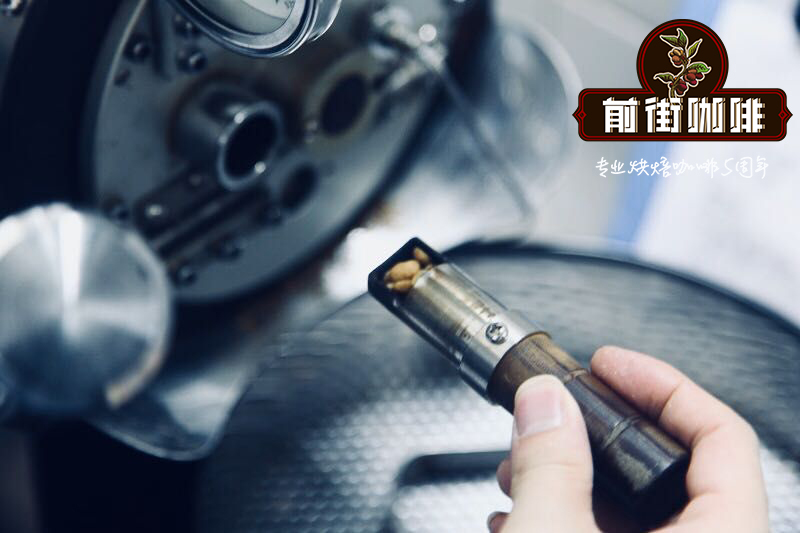Catimor Katim Coffee tastes good catimor Katim Coffee beans are good

Professional coffee knowledge exchange more coffee bean information please follow the coffee workshop (Wechat official account cafe_style)
Catimor was developed by scientists in Portugal in 1959 to find a magic formula for high yield, high disease resistance and small plants (that is, high-density planting). This variety is a hybrid between Timor (resistant to coffee leaf rust due to its Robusta genetic rhizome) and Katura.
Catimor was first introduced to Brazil in 1970, but soon after, the plant spread rapidly in Latin America through experts looking for high-yielding coffee varieties. At high and very low elevations, plants often do not thrive. However, at a height of 700 to 1000 meters, this is ideal.
The study was based on low and middle elevations, where coffee moths and other pests are more likely to occur. Soon, however, it became clear that Katimodo sometimes lacked the quality of the cups needed to expand its appeal, making it extremely difficult for many farmers to grow Katimodo. Moreover, due to the energy consumed in the process of high yield, Catimors showed a trend of short life. In Indonesia, for example, the average production life of Catimor trees is only 10 years.
Catimor tree has the advantages of small size, high planting density and fast fruit ripening. If it is maintained well, it can ensure high yield. Its branches are similar to the C. canephora plant, and its leaves have a distinct reddish-brown color when they first grow. One of the main challenges in nurturing Catimor may be the inputs (fertilization and shading) needed to maintain productivity, which require very close monitoring and can be costly.
Today, Catimor is common in Indonesia and Vietnam. After the crisis of coffee leaf rust in Central America, the disease is becoming more and more common in higher-altitude countries such as Mexico and Peru.
One of the main problems that Catimor often mentions is the quality of the cup. At low elevations, this variety is almost no different from other Arabidopsis varieties in senses. However, when these plants are planted above 1200 meters above sea level, their taste will be different. In this case, many people would prefer Keturah, Bourbon and Katui. However, we did encounter Catimors-- that we like very much, for example, those from Vietnam and Indonesia. We believe that well-cared for and carefully processed Catimor can show good characteristics. In the words of our friend Steve Leighton at HasBean, "there are no bad varieties, only varieties planted in bad places."
Some sub-cultivars:
Catimor TMel 8667-is a very short plant with very large berries and seeds.
Catimor TMel 5269-this is a strong plant that grows between 600m and 900m above sea level and has an annual rainfall of more than 3000 mm.
Catimor TMel 5175-is a high-yielding and robust plant that cannot grow under very low and very high growth conditions.
END
Important Notice :
前街咖啡 FrontStreet Coffee has moved to new addredd:
FrontStreet Coffee Address: 315,Donghua East Road,GuangZhou
Tel:020 38364473
- Prev

Three-stage water injection of hand-brewed coffee proportion of three-stage water injection method
Professional coffee knowledge exchange more coffee bean information please follow the coffee workshop (Wechat official account cafe_style) I prefer to divide the pouring of V60 into 2-4 groups. I prefer this more casual approach because it takes less energy to deal with, but I still get a glass of consistent good wine. I think this is a good start. You will find that there is something wrong with other ways
- Next

Catimor Katim Coffee catimor Katim Coffee good? Katim Coffee beans?
Professional coffee knowledge exchange more coffee bean information Please follow Coffee Workshop (Wechat official account cafe_style) Catimor was developed by scientists in Portugal in 1959 to find magic recipes for high yield, high disease resistance and small plants (that is, high-density cultivation). This variety is a hybrid of Timor (resistant to coffee leaf rust due to its Robusta genetic rhizome) and Katula.
Related
- Beginners will see the "Coffee pull flower" guide!
- What is the difference between ice blog purified milk and ordinary milk coffee?
- Why is the Philippines the largest producer of crops in Liberia?
- For coffee extraction, should the fine powder be retained?
- How does extracted espresso fill pressed powder? How much strength does it take to press the powder?
- How to make jasmine cold extract coffee? Is the jasmine + latte good?
- Will this little toy really make the coffee taste better? How does Lily Drip affect coffee extraction?
- Will the action of slapping the filter cup also affect coffee extraction?
- What's the difference between powder-to-water ratio and powder-to-liquid ratio?
- What is the Ethiopian local species? What does it have to do with Heirloom native species?

